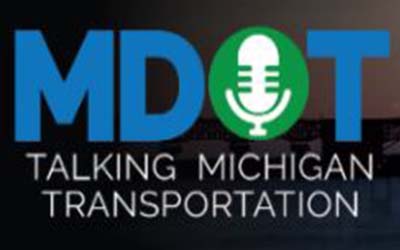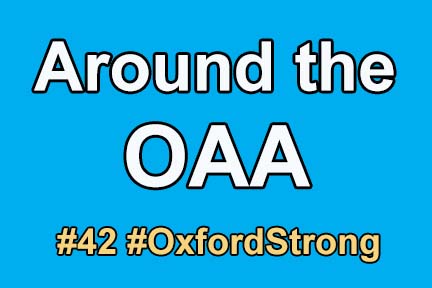
Urban planner talks Complete Streets, collaboration
|

|


FOR IMMEDIATE RELEASE: December 13, 2021 Contact: [email protected]
Governor Whitmer Leads Letter from 17 Governors Urging Passage of Federal Voting Rights Legislation Governor Whitmer leads group of governors in sending letter to Senate layin
LANSING, Mich. – Today, Governor Gretch
“Right now, voting rights are under attack in states across the country, including right here in Michigan,” said Governor Gretchen Whitmer. “Our democracy works when everyone can be heard, when every eligible voter—no matter where they live or who they support—has safe, convenient, and secure access to the ballot. In states across the country, people’s voices are being silenced. Since the last election, legislatures have introduced 389 anti-voting bills and counting across 48 states. Protecting the right to vote is not a political or partisan issue. It is foundational to who we are. As governors, we have been working to make the ballot more accessible at the state level, and we know that voting rights have long been a bipartisan issue at the national level. We can work together to protect people’s voices by passing the Freedom to Vote Act and the John R. Lewis Voting Rights Advancement Act. Let’s get this done for the sake of our democracy.”
Freedom to Vote Act The Freedom to Vote Act would improve voter access, uphold election integrity, and boost transparency.
To improve voter access, the bill would make Election Day a national holiday, provide voters two weeks of early voting, offer online voter registration, permit same day voter registration, and restore voting rights to people who have served their time in prison, among other reforms.
To uphold election integrity, the bill would require campaigns to disclose contacts from foreign governments, mandate paper ballots, and protect local officials from partisan interference or control, among other reforms.
To boost transparency, the bill would ban partisan gerrymandering, combat dark money, and prevent coordination between super PACs and campaigns, among other reforms.
John R. Lewis Voting Rights Advancement Act The John R. Lewis Voting Rights Advancement Act takes on voter discrimination and suppression by restoring the protections of the Voting Rights Act of 1965. The legislation would ensure last minute changes to voting laws do not adversely affect voters, authorize more robust responses to racial discrimina
|
| Invasive pest already confirmed in five southwest Michigan counties |
|

This is a blog that is devoted to the OAA. We cover 23 schools from Oakland County to Wayne County. From Oxford to Harper Woods. This blog will give insight and projections around the OAA.
Written Monday December 6th at 8:00 PM
Trent, Ty, and Tate: My tribute to Tate Myre and the entire Myre Family
By Anthony Taormina
One night in September, as Lake Orion and Oxford played each other in a JV Football contest in Oxford, at halftime, there was a group of Oxford Football Players playing football, having fun with each other. One of those kids was Tate Myre. I watched them all play, thinking, this is what football is about, this is what friendship is all about. At 0-3, that team could have pouted but they didn’t, they stayed together, as a result, they were able to get into the playoffs and win a playoff game. My brother wrote a wonderful article about Oxford Football, an article I bet Tate read, I look back to those group of kids playing, yeah that same group of brothers, playing for each other, playing for nothing to lose.
I remember watching Tate along with his brothers Trent and Ty, all of them very successful student athletes, each of them great academic scholars, football players, wrestlers but even better men, well loved, honest, willing to do anything, really can’t ask for a better trio of brothers. Tate very much looked up to his brothers, you could tell in his football play, his twitter posts, often retweeting one or both of his brothers, their play, personalities, very similar. A lot of credit goes deservingly so to Mr. and Mrs. Myre, they raised three wonderful kids, each of them, star football players, star wrestlers, loved their friends, and community, in many ways, the Myres, all of them represent Oxford proud and will continue to represent the town proud. I know there has been talk about naming the football stadium after Tate but I think they should name after all the Myre’s, Tate very much learned from his brothers, each of them learned from their parents, you can’t ask for better than that.
As a Dragon, I had the pleasure to watch all the Myres play football, despite always wanting to beat Oxford year in and out, it has been a treat to watch them all play, their hard work, their competitiveness but also their overall personalities are what I’m most impressed with, putting their team, their community, their student body, putting all of that first over self. I knew that many young ones at Oxford look up to all the Myres and no doubt they will continue to. Their personalities, how they care about everyone they come across, going to bat for others, this is how I will always remember the Myres. When it comes to Oxford Football, five names stand out (sorry Coach (Billy) Keenist even though from an 06 perspective that would be you) Rowley, Line, Brown, Carpenter, and Myre, those names stand out and should always stand out.
On Sunday, Tate decided to befriend me on twitter, I have befriended a lot of his Oxford brothers and like I do for my Lake Orion kids, I will check up on Oxford kids as well and talk to Oxford Coaches. After Tate befriended me, I said to myself that I would befriend Trent, Ty, and their Dad, it will be up to them if they want to follow me or not, after Tate followed me, I reached out, I thought at first that he wanted to follow my brother since he writes the OAA blog so I direct messaged him and thanked him for following me on Twitter, he told me that he appreciated it. That meant a lot, it is something I will value forever. I had truly hope to check up on him from time to time and see how he was doing, no doubt my best friend the late great Steven Crowder will do that for me now.
The next time I go to Oxford and look at that football field, a lot of emotions will come out, one of a beautiful family that has devoted their lives to Oxford Football, Oxford Wrestling, and Oxford Athletics, how two wonderful parents raised three boys, not just to become great athletes but even better men, it shows in the Oxford Community. Together, will be Oxford Strong but also Myre Strong.
#42 #OxfordStrong

This is a blog that is devoted to the OAA. We cover 23 schools from Oakland County to Wayne County. From Oxford to Harper Woods. This blog will give insight and projections around the OAA.
Written Saturday December 4th at 12:00 AM
This blog will be updated.
Tragedy usually bring communities and rivals together.
Lake Orion and Oxford are two communities that are very passionate especially their athletic programs where your either green and white or blue and gold.
Lake Orion and Oxford will always be linked.
They have done several projects together including the Orion-Oxford FISH drive, numerous fundraisers, youth leagues, and clubs. Both communities are very similar, blue collar, hard working, strong positives, friendly, you name it.
Lake Orion was very instrumental in bringing Oxford into the OAA in 2010.
They have continued to support Oxford in several ways.
Both communities have come together this past after tragedy struck at Oxford on Tuesday.
One instance that this reminds me of is April 27th 2011 when an E-F4 tornado struck Tuscaloosa, Alabama. Tuscaloosa is the home of the University of Alabama and their proud football program. 64 people including six Alabama students lost their lives that day.
Days later, Alabama’s arch rival Auburn came to help. Former football Coach Gene Chizik had his players, coaches, and administration go to Tuscaloosa to help those in need and clean up the damage caused by the tornado putting their athletic rivalry aside.
Lake Orion has been tremendous in helping the Oxford community heal through this terrible tragedy. They have had vigils, donations dedicated to the Oxford community, there is blue and gold ribbons across the town, and also businesses and the schools are using the #OxfordStrong.
Lake Orion and Oxford may never get to the rivalry of the Iron Bowl but everyone knows everyone and when they are together and help one another great things do happen.
My Podcast
https://soundcloud.com/user-539915961/oaa-now-special-oxford-tribute